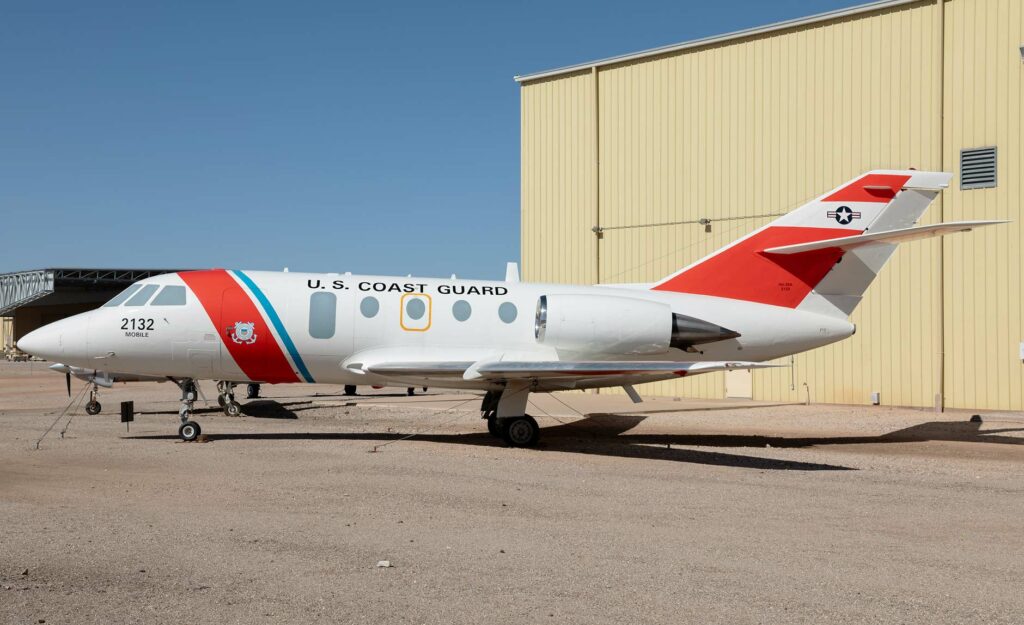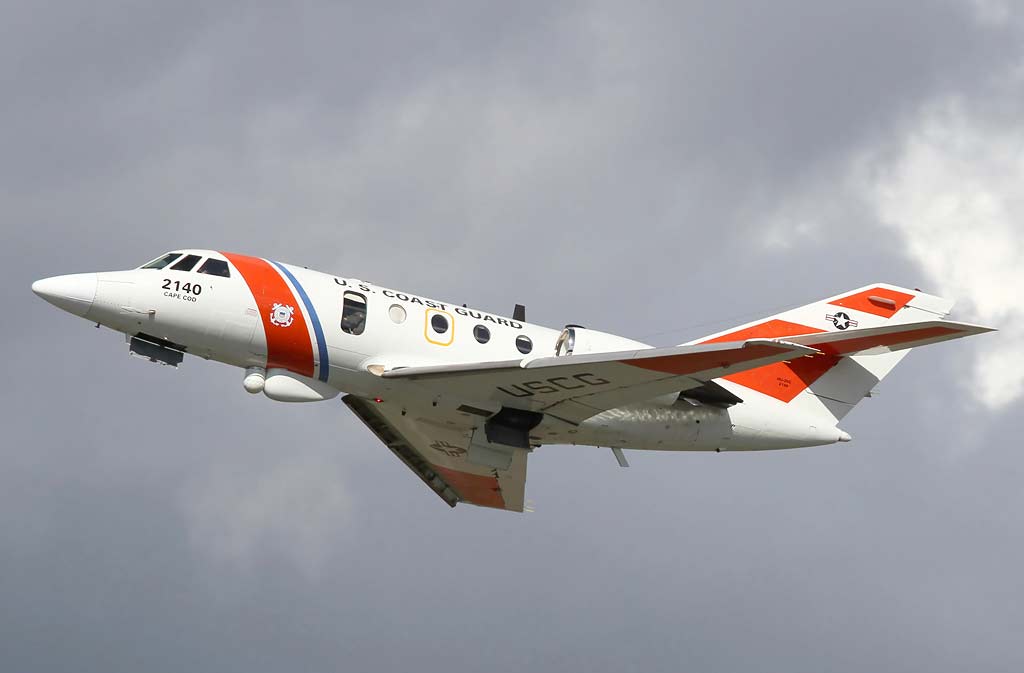The Dassault HU-25 Guardian is a high-speed, twin-engine jet used by the US Coast Guard for search and rescue, law enforcement, and environmental protection.
In Brief
The Dassault HU-25 Guardian, derived from the Dassault Falcon 20, is a medium-range jet employed by the United States Coast Guard primarily for search and rescue, maritime patrol, and environmental monitoring missions. Equipped with advanced radar, sensors, and navigation systems, it is designed for high-speed, high-altitude flights to quickly reach incidents or areas of interest. The aircraft features turbofan engines, facilitating fast response times over vast maritime regions. It has been pivotal in numerous missions, including pollution control, drug interdiction, and enforcing maritime laws, showcasing versatility and reliability in various operational contexts.
The Dassault HU-25 Guardian stands out as a critical asset in the fleet of the United States Coast Guard, serving a multi-mission role that spans from search and rescue operations to environmental patrols.

History of the Development of the Dassault HU-25 Guardian
In response to the growing demands for an advanced, high-speed aircraft capable of fulfilling diverse roles such as search and rescue, law enforcement, and environmental monitoring, the United States Coast Guard initiated the HU-25 Guardian program in the late 1970s. The service sought an aircraft that could operate effectively over the vast maritime expanses, requiring high speed, excellent reliability, and sophisticated onboard sensors.
Dassault Aviation’s Falcon 20 was selected as the base model for the Guardian due to its performance, range, and the adaptability of its airframe for various missions. The aircraft was customized to meet the specific needs of the Coast Guard, integrating advanced radar, surveillance, and navigation equipment.
The HU-25 swiftly proved its value after its introduction in the early 1980s, enhancing the Coast Guard’s capabilities significantly in terms of operational range, speed, and mission versatility. It became an indispensable tool for maritime safety, environmental protection, and national security.
Design of the Dassault HU-25 Guardian
The HU-25 Guardian’s design is a testament to the adaptability of the Dassault Falcon 20 airframe. It incorporates a high-wing, twin-engine layout, optimized for stability and performance at various altitudes and speeds. The aircraft is powered by two General Electric CF700 turbofan engines, known for their efficiency and reliability, which allow the Guardian to achieve high speeds and rapid ascent capabilities, crucial for time-sensitive missions.
Significantly, the HU-25 is equipped with state-of-the-art avionics, including radar systems capable of high-resolution imaging and target tracking, essential for its surveillance and search and rescue roles. The cabin is configured to accommodate specialized equipment and personnel, ensuring versatility across a range of missions, from environmental monitoring to maritime law enforcement.
The aircraft’s design, however, is not without its limitations. The adaptation of a business jet airframe imposes constraints on range and payload capacity, impacting endurance and the scope of equipment that can be carried on extended missions.
Performance of the Dassault HU-25 Guardian
The HU-25 Guardian is renowned for its exceptional performance characteristics. Capable of reaching speeds in excess of 800 km/h (500 mph) and an altitude ceiling of 12,000 meters (42,000 feet), it can respond swiftly to emergencies or areas of interest. Its operational range extends up to 2,400 kilometers (1,500 miles), enabling wide-area coverage for maritime patrols and environmental surveillance.
Compared to other maritime patrol aircraft like the Lockheed P-3 Orion, the HU-25 is faster, allowing quicker on-scene response times, although it sacrifices some endurance and payload capacity for this speed. Its performance is optimized for the Coast Guard’s unique missions, blending high-speed transit with the capability to loiter effectively over a scene or target area.
Variants of the Dassault HU-25 Guardian
The HU-25 Guardian was produced in several variants, each tailored to specific mission requirements:
- HU-25A: The initial version, equipped with search radar and sensors for surveillance, search and rescue, and maritime patrol.
- HU-25B: Modified with additional equipment for more sophisticated surface surveillance and reconnaissance missions.
- HU-25C: Enhanced version equipped with advanced radar and sensor technology for long-range missions, particularly in drug interdiction and environmental protection.
Each variant ensured the HU-25 remained a versatile and adaptable asset, capable of performing a wide array of missions in support of the Coast Guard’s multifaceted operational objectives.

Military Use and Combat of the Dassault HU-25 Guardian
The HU-25 Guardian primarily served in non-combat roles but was integral to national security and law enforcement operations. Its missions have included search and rescue, drug interdiction, illegal immigration patrols, environmental monitoring, and disaster response. The aircraft’s high-speed capability and advanced sensors have been crucial in tracking and intercepting illegal drug shipments, coordinating with surface assets, and providing on-scene command during complex operations.
The Guardian has not been employed in traditional combat but has been instrumental in safeguarding maritime borders, responding to maritime disasters, and protecting the marine environment. Its contributions to missions like oil spill monitoring and fisheries patrols have had significant environmental and economic impacts.
The Dassault HU-25 Guardian has exemplified high-speed, multifunctional capability in the service of the United States Coast Guard, demonstrating the adaptability and effectiveness of the Falcon 20 airframe in a range of critical missions. From fast-response search and rescue operations to complex maritime environmental monitoring, the Guardian has proven to be an invaluable asset, balancing speed, range, and advanced technological integration to meet the diverse needs of maritime safety and security. Its legacy in the Coast Guard underscores the significance of versatile, reliable, and high-performing aircraft in executing a broad spectrum of maritime operational tasks.
Back to the Special Aircraft section